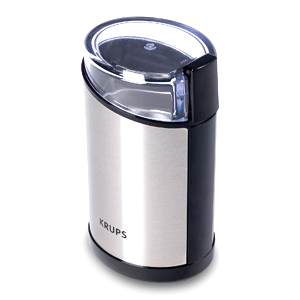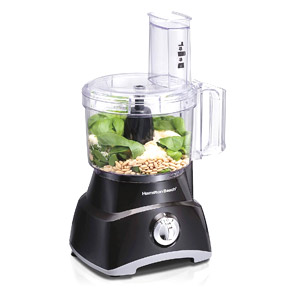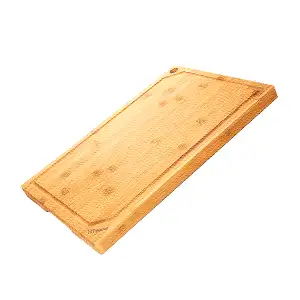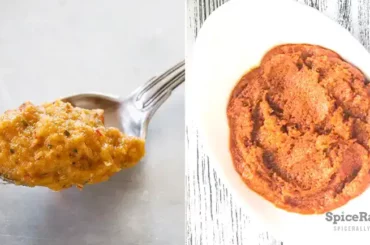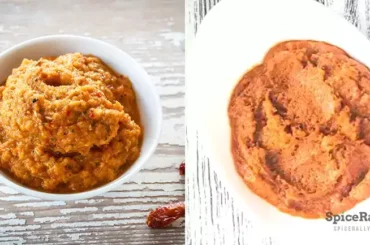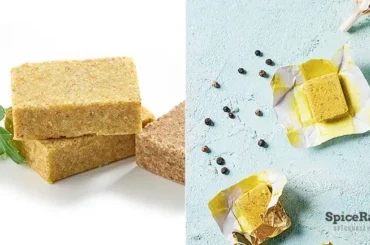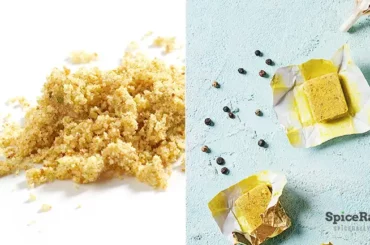If you are obsessed with Thai food, making your own curry paste could be a potential craving. Store-bought curry pastes are just fine but homemade ones hold more freshness and the best part is your control over the ingredients. So here’s an authentic Thai yellow curry paste recipe that you can use to make many dishes.
Thai yellow curry paste is way more different than the red curry paste or the green curry paste. It has a more spicy, curry overtone and include key ingredients such as Lemongrass, Galangal, Turmeric, Curry powder, Kaffir lime leaves and Thai chiles.
Refer to the list of ingredients and be ready to put together the best yellow curry paste ever!
Authentic Thai Yellow Curry Paste Recipe (Prik Gaeng Garee)
A scoop of homemade yellow curry paste could be all you need to add a wonderful spicy warmth to anything savory! You can try making various curries with this ingredient while being creative with dishes you wouldn’t expect!
As the name suggests, you can use Thai yellow curry paste as the key ingredient in traditional Thai yellow curries. However, in addition to this, this curry paste is versatile to go as the base of a variety of soups, and stews, flavor up fried rice, incorporate into sauces, dips and even mix with savory batters.
Thai yellow curry paste is not overwhelmingly spicy. But still, it has a considerable spiciness due to the use of curry powder and a few additional spices. You may always adjust the spiciness of this recipe by using more or less spices and fresh herbs depending on your preference.
The yellow curry paste holds more spiciness than the green or red curry paste. However, it is way less hot than the red curry paste and contains a lesser herbal undertone than the green curry paste. But still, the base flavor of all three curry pastes is comparable due to similar ingredients.
Not a single gluten-related element is included in our yellow curry paste recipe. Thus, anyone with a gluten sensitivity or who follows a gluten-free diet can undoubtedly include this curry paste.
Since we have included fermented shrimp paste in this yellow curry paste recipe, this is not favorable for vegans. But you can skip the shrimp paste, substitute it with miso paste, and make a vegan-friendly yellow curry paste.
Yes, this curry paste is low in carbs and is excellent to be included in a low-carb or ketogenic diet. You can use this curry paste as a rub for your proteins like salmon or seafood. This is also great to go with most of your veggies!
Related Topics
- Authentic Thai Red Curry Paste Recipe- A Simple Formula That Will Come Under 30 Minutes!
- How To Make Thai Green Curry Paste At Home? ( A Simple Recipe Made From Scratch)
- Authentic Homemade Thai Massaman Curry Paste Recipe Made From Scratch!
This post may contain affiliate links. If you use these links and make a purchase, We may earn a small commission. However, there’s no extra cost to you. Also, as an Amazon Associate, we earn from qualifying purchases. Thanks!


